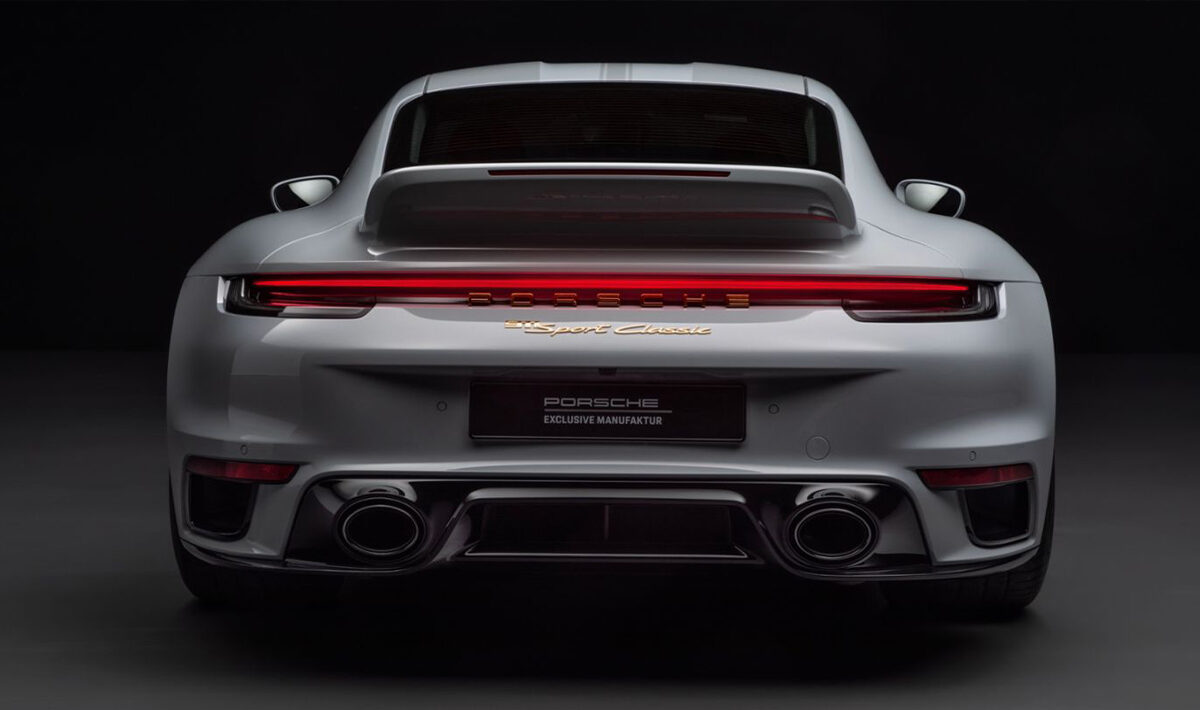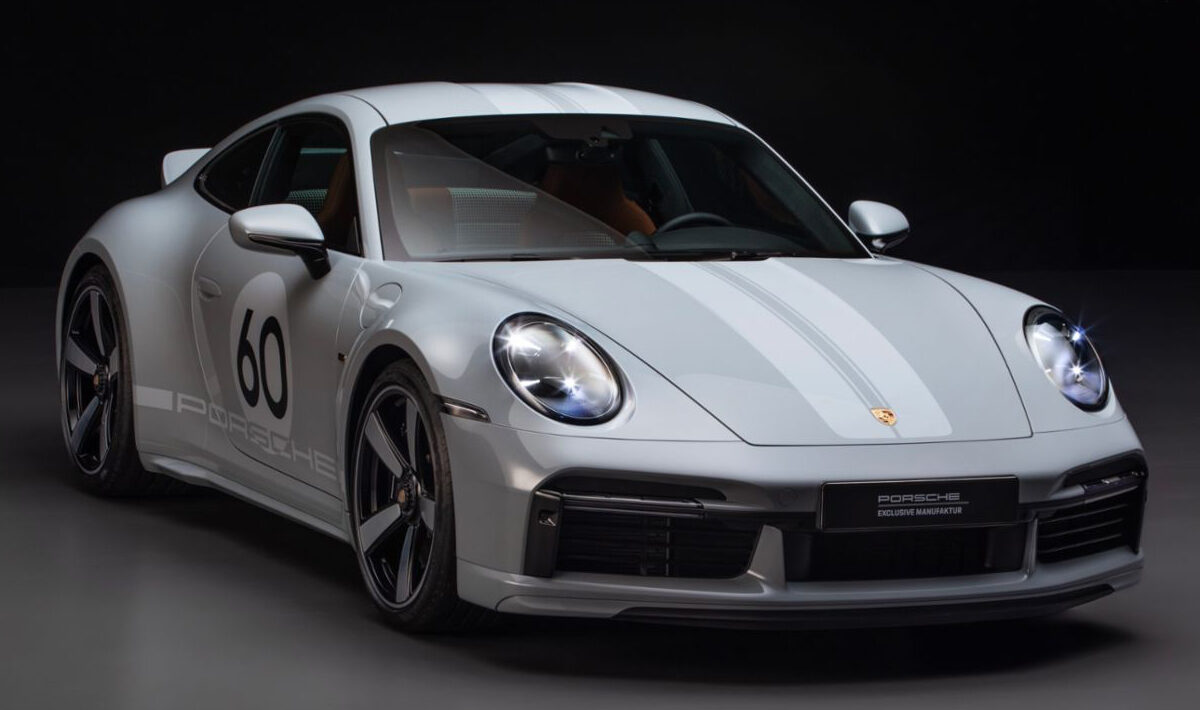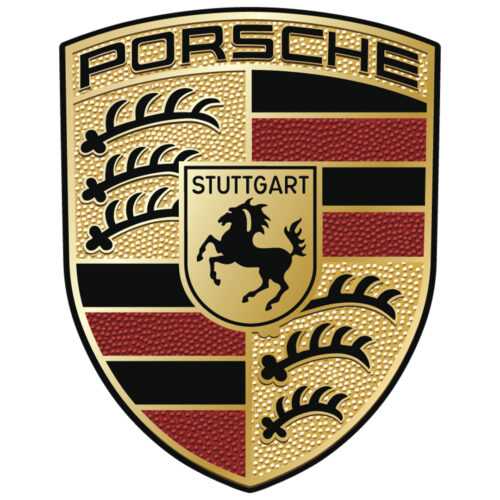How to Make the Porsche 911 Sport Classic Even Better













The latest Heritage design car from Porsche brings the second coming of the 911 Sport Classic. When Porsche revealed they would be reiterating 4 Heritage cars, I knew that a new 911 would be one of them. The project manager of the 997 Sports Classic, Boris Apenbrick, said “We had often heard the question from customers: ‘When are you going to do a Sport Classic again?”
Now is the answer. The original Sport Classic hit the roads back in 2009. Rumours of a new one had been in the air a long time before development cars and prototypes were first spotted being tested. At long last, the 992 Sport Classic (Porsche’s worst kept secret) has arrived.

The specification is some what of a surprise, being based on the Turbo, not the Carrera model line as it had originally been spun off. Regardless of this, the new car undeniably delivers with Boris’s insistence that the 992 Sport Classic is “a classic sports car with a performance-enhanced engine, manual transmission, rear-wheel drive, and typical Gran Turismo equipment.” Michael Mauer, Porsche’s design boss added “We are continually working on new ideas. There is no future without the past, we must keep up with the zeitgeist but never neglect the heritage of the brand.” The renewed Sport Classic is Porsche’s own take of its history, updated into the contemporary, and I for one am not going to deny that it looks and sounds like a tantalising package.
Unashamedly nodding to its forebearer visually, it’s not the styling that initially grabbed my attention, beautiful as it is. Instead, it’s the bespoke specification – 3.7 litre Turbo engine mated with rear-wheel drive and manual transmission. While the designers have been busy plundering Porsche’s history, Porsche’s engineers haven’t been idle, creating a unique power train for this new, limited series model. Power for the turbocharged flat six 3.7 litre variable vane is quoted at 550PS, which is lower than the Turbo’s 580PS, along with torque dropping to 600Nm from the Turbo’s 750Nm. That’s a result of some necessary prudence connected to the Sport Classic only driving a single rear axle, and doing so via a manual transmission, but also because the engine breaths through the top engine cover only. This loss of air intakes fore of the rear wheels allows the Sport Classic to features a unique wide body look, a visual spectacle in the current 911 range.

What makes the Sport Classic’s driver highly appealing is the adoption of a manual transmission. Porsche isn’t offering PDK with the Sport Classic, meaning it’s the sole transmission choice with a new limited series car. This manual is derived from the Carrera models, a 7-speed transmission, not the 6-speed set up of the GT department cars. While some might bemoan this development, the 7-speeder docks have the GTS’s slightly lower gearstick (1cm). This minimal revision noticeably improves the shift quality on the Carrera GTS.
Having driven many Porsche’s over the years I know how demonstratively different Porsche can make its models feel with minute, incremental changes. I was intrigued to see how the greater power and torque characteristics of the variable-veined turbocharged engine in the Sport Classic would perform on the road. It was no surprise that the peak outputs of both power and torque differ, being less, but the spread also changes. It’s particularly notable in the maximum torque figure, with the peak 600Nm available from 2000rpm to 6000rpm. That gives some credibility to Porsche’s affirmation that the Sport Classic will deliver grand touring ease, together with driver-centric appeal. It promises in-gear flexibility too, whether you’re in a rush or lazily block-shifting in traffic.
It’s a mouthwatering powertrain specification that might be bettered in raw numbers: the 4.1 seconds or 0-62 miles per hour time would be beaten by a Sport Chrono-equipped, PDK Carrera. Though most are highly likely to be satisfied with the quoted 196mp top speed. Interestingly, too – particularly among the committed driving community – it’s less about outright performance and more towards the potential for engagement. In this sense the Sport Classic is full of promise, due to the interaction its specifications should bring. For example, its manual/RWD arrangement puts it in second place behind the 997 GT2 RS in the ‘most powerful manual cars ever produced’ chart, and nobody ever accused that car of being anything less than wildly exhilarating.

The Sport Classic’s chassis should deliver the ideal platform to enjoy and revel in its performance. Porsche Exclusive Manufaktur has revealed that it rides on a Sports Chassis, which lowers the ride height by 10 millimetres. Sports Chassis equipped cars always feel special on the road in relation to rigidity and control. The rest of the dynamic specs are aided by an equipment list that includes Porsche Dynamic Chassis Control with rear axle steering, Porsche Active Suspension Management, and bespoke tuning and collaboration of the spring and dampers to fit the Sport Classic’s differing weight and performance characteristics.
To help manage the stopping power, the Sport Classic has standard PCCB brake discs. These are clasped by the same calipers as the Turbo, though finished in a more subtle black, opposed to yellow, and lie behind 20/21-inch Fuchs alloy wheels. Those new wheels come with a centre lock for the first time and are now forged (giving them more strength) and come fitted with 255/35 ZR20 and 315/30 ZR21 tyres front and rear. The PCCB and those light, forged wheels bring clear advantages thanks to the reduction of unsprung mass, which should bring fine wheel control to the benefit of both rigidity and ride comfort.

Being a Porsche aficionado, this driver-focused specification had me drooling; I had to delve deeper into the details. Porsche Exclusive Manufaktur has smartly found a balance between the conflicting goals of a fully crammed special equipment model, whilst simultaneously taking measures to save weight. It’s certainly not been on an RS-style crash diet, but there’s a lightweight battery, as well as a reduced (and hence lighter) soundproofing that makes up part of the Lightweight Package on the standard Turbo. The rear seats remain as they were, as do the 18-way electrically adjustable seats. The standard sports exhaust is lightened too, in a bid to manage mass and liberate more pleasing sounds from it. Blend all that with the carbon fibre Sport Classic bodywork elements, along with the removal of drive to the front axle, and the 992 Sport Classic weighs in at 1,570 kilogrammes. That’s some 70 kilogrammes less than a 911 Turbo.
It seems to work too, because in testing the former racer and test driver, as well as Porsche’s brand ambassador, Jorg Bergmeister said “The best combinations often only emerge during the development process and trying things out. The Sport Classic is extremely sporty and designed for absolute driving pleasure. It’s truly an exhilarating experience and plants a smile on my face every time I take it for a spin.”
One could say he would say that, but I’m well versed in Porsche’s specification models, and they’ve got a habit of delivering cars that overproduce on that promise, especially with limited series, numbered cars. It’s not just the drive that captivates… in line with its limited status and ensuring it’s worthy of the Sport Classic badge, there’s a whole lot more to the new model than just its drivetrain. The detailed specification highlights that Porsche Exclusive Manufaktur has created a very special car indeed.

The 992 Sport Classic will be a limited series model of just 1,250 units. That’s an increase in production compared to the 2009 original, but still not enough given the certain demand. If you’re reading this with intent but have no deposit down, then you’ll have missed the opportunity to buy one.
That’s a real shame because if you take its specification and rarity into account, the 992 Sport Classic is quite a bargain – even at £209,540 in the UK. There’s little need to add anything to that. I’ve tried via the configurator and could only find about £1500 of extra kit. This doesn’t include the matching Porsche Design watch (only available to those that have ordered a car), for which you’ll need to add another £12,500 to your invoice. By doing so, you’ll be sent a specific link to the Porsche Design watch configurator.
Visually it’s impossible to ignore the 992’s stylistic and reverential nod to its predecessor. The 992 Sport Classic keeps the original’s double bubble roof and fear not, the contrasting stripe is there, in Sport grey, running from the exquisitely shaped bonnet, over the roof and ending at the 2.7 RS-aping ducktail spoiler at the rear.
Even more impressive are the finer details of the car’s colour, shape, and materials used. Explained by Daniela Milošević, who works in Porsche’s colour and trim division: “The original 997 had a light grey colour with dark stripes. It’s now exactly the opposite, with the exterior colour being darker and more modern, and the stripes a bit lighter. More importantly, they’re no longer attached as decals to the vehicle like last time, but are now painted instead. This means that when you run your fingers over the two strips, you’ll notice the soft, smooth surface right away. It’s been produced using a more complex process and is really elegant. Also, each panel that the stripe touches is made from carbon fibre, making the bespoke carbon fibre bonnet 2.1lkg lighter, along with the contoured, double-bubble roof that’s removed 1.4kg of mass.”

Those 992 Sport Classic customers on the buyer’s list will be able to choose between the new colour of Sport grey metallic, Solid black, agate grey metallic, or Gentian blue metallic. Each comes with that stripe, number roundel and ‘IROC lettering’, with those details finished in the stripe Sport grey hue. As part of the price, the side graphics can be specified with a number of your choice, or removed at no cost. Further individualisation will extend the Sport Classic to Porsche’s Paintchoices, although currently Porsches Exclusive Manufaktur is stating it will only do so from October 2022 at the earliest, and doing so means sacrificing the stripe.
It matters not what colour it’s finished in; the Sport Classic’s body is unique on its own, and I don’t just mean the obvious bonnet, ducktail and the contoured roof. By not having the punctured intakes in front of the rear wheels, it gives it the shapeliest rear of any current 911. Achieving this wasn’t the simplest of tasks, reveals Grant Larson, the director of Special Projects at Style Porsche. “The rear wings was definitely the biggest challenge. There wasn’t a tool for removing the rear intake, so we had to tinker with an experimental tool.” It was a tool used for pre-series cars and they repurposed it as a limited production tool. “It was an unusual approach that seemingly made the impossible possible” added Boris.
That change is hugely significant, but elsewhere the changes are more subtle. In fact, so subtle that they might be missed with a quick, cursory glance. Look a little closer, with more scrutiny, reveals an array of delightful touches that add to the overall conclusion that the Sport Classic is something highly desirable. The window surrounds, the engine cover grilles, the rear diffuser and exhaust tips, and the light surrounds are all furnished in black, though there’s the option – one of few available – to swap these out for a Silver Exterior Accent Package. It’s not a choice I would take because the contrast works wonderfully and lets some of the other highlights to show more effectively too.

The Porsche badges, outside and in, are styled as those you’ll find on a 1963 911, with the interior being more overtly retro in its execution compared to the exterior. That’s largely down to the material choices. Semi aniline leather, with its softer feel and more natural look, is finished in either black or cognac, with the seat centres and elements of the door covered in Pepita fabric. The familiar, iconic pattern fabric has been linked with Porsche almost since the company’s conception.
There’s wood on the dash, it’s finished open pore, added warmth and texture to the interior, while the instruments ahead and the dial of the standard Sport Chrono clock on top of the dash are all finished in black, white and green. There’s extensive leather covering the interior, appearing on the sun visors, steering column, air vents slats, vehicle document holder, mirror console, fuse box cover, and cupholder. On top of this, the key also features a soft leather pouch, keeping its body-coloured painting protected. Sport Classic illuminated sills, Heritage door mats, a perforated Race-Tex headliner and trim on the pillars all combine to stunning effect. In case you’re left in any doubt that you’re in a special 911, the Porsche Exclusive Manufaktur embossed into the lid of the storage cubby between the front seats, or the numbered plaque on the dashboard will certainly remind you.
In a series of four limited edition models, the Sport Classic is the second, after the 2020 911 Targa 4S Heritage Design Edition. The two cars that will follow are unconfirmed. As Boris says: “Limited series vehicles are always polarising somehow – and very deliberately so. They’re often not self-explanatory either. That’s precisely what makes them so appealing.”
On evidence of the Sport Classic; its execution, its specification, and what it represents – a company still willing to build engaging, daring, interesting, and gorgeous cars for drivers – I’m as excited to drive it as I am desperate to see what’s coming next.
Read more on

Do you have a passion for cars? Would you like to join the My Car Heaven team?
Get in touch, we'd love to hear from you.
Find out moreRelated Stories
Advertisement Advertisement
Advertisement Advertisement
Advertisement

